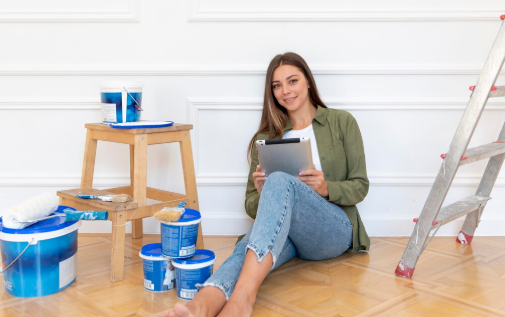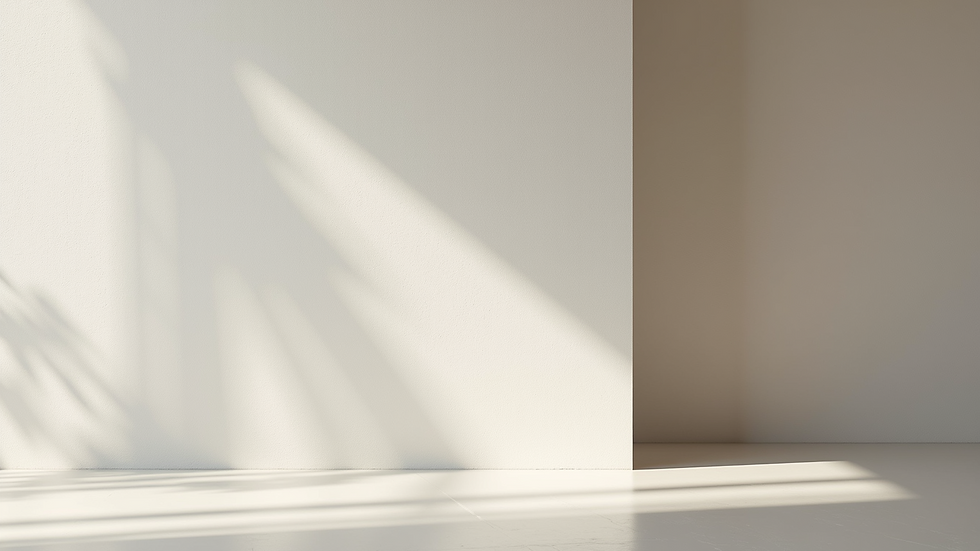Tips for Maintaining Interior Wall Paint
- Staff Desk
- 9 hours ago
- 4 min read

Maintaining the beauty and longevity of your interior wall paint is essential for keeping your home looking fresh and inviting. Walls are often the largest visible surfaces in a room, and their condition can significantly impact the overall ambiance. Proper care and maintenance can prevent premature wear, stains, and damage, saving you time and money on frequent repainting. This guide offers practical tips and expert advice to help you preserve your interior wall paint effectively.
Understanding the Types of Wall Paint
Before diving into maintenance tips, it’s important to understand the different types of wall paint commonly used indoors. Each type has unique characteristics that affect how you should care for it.
Flat or Matte Paint: This paint has no shine and is excellent at hiding imperfections. However, it is more prone to staining and can be difficult to clean without damaging the finish.
Eggshell Paint: Slightly more lustrous than flat paint, eggshell offers better durability and is easier to clean.
Satin and Semi-Gloss Paint: These finishes are more reflective and highly durable, making them ideal for high-traffic areas and rooms prone to moisture, such as kitchens and bathrooms.
Knowing your paint type helps you choose the right cleaning methods and products to avoid damage.

How to Maintain Interior Wall Paint
Maintaining your wall paint involves regular cleaning, prompt repair of damages, and protecting the walls from potential harm. Here are some actionable tips:
1. Regular Dusting and Cleaning
Dust and dirt can accumulate on walls, dulling their appearance. Use a soft cloth or a microfiber duster to gently remove dust weekly. For cleaning:
Use a mild detergent mixed with water.
Test the solution on a small, inconspicuous area first.
Use a soft sponge or cloth to wipe the walls gently.
Avoid abrasive scrubbers that can damage the paint.
2. Spot Cleaning Stains
Stains from food, grease, or fingerprints can be treated with spot cleaning:
For greasy stains, use a mixture of warm water and dish soap.
For tougher stains, a baking soda paste (baking soda mixed with water) can be applied gently.
Always blot stains instead of rubbing to prevent paint removal.
3. Avoid Excess Moisture
Excess moisture can cause paint to peel or develop mold. Use exhaust fans in bathrooms and kitchens to reduce humidity. Fix any leaks promptly and ensure proper ventilation.
4. Protect Walls from Physical Damage
Furniture, pets, and everyday activities can cause scuffs and scratches. Use felt pads under furniture legs and avoid leaning heavy objects against walls.
5. Touch Up Paint When Needed
Keep leftover paint for touch-ups. Small chips and scratches can be easily fixed with a brush, preventing further damage.

How to Care for Flat Paint?
Flat paint is popular for its smooth, non-reflective finish that hides wall imperfections well. However, it requires special care because it is less durable and more prone to staining than glossier finishes.
Gentle Cleaning: Use only mild soap and water with a soft cloth. Avoid scrubbing hard or using harsh chemicals.
Spot Cleaning: For marks, try a magic eraser or a baking soda paste, but test in a hidden area first.
Avoid Frequent Washing: Flat paint can wear off if cleaned too often. Instead, focus on spot cleaning.
Repainting: Over time, flat paint may need refreshing more often than other finishes.
For detailed advice on flat paint care, you can explore this flat paint care resource.

Preventing Common Wall Paint Problems
Certain issues can arise if walls are not properly maintained. Here’s how to prevent them:
Peeling Paint: Caused by moisture or poor surface preparation. Ensure walls are dry and primed before painting.
Cracking: Often due to temperature changes or structural movement. Use flexible paint and repair cracks promptly.
Stains and Discoloration: Avoid smoking indoors and control humidity to prevent yellowing or mold growth.
Fading: Protect walls from direct sunlight by using curtains or UV-protective window films.
Enhancing the Longevity of Your Wall Paint
To extend the life of your interior wall paint, consider these additional tips:
Use High-Quality Paint: Investing in premium paint can save money in the long run.
Apply a Protective Topcoat: Some paints allow for a clear protective layer that increases durability.
Maintain Consistent Indoor Climate: Avoid extreme temperature and humidity fluctuations.
Regular Inspections: Check walls periodically for early signs of damage.
By following these guidelines, your walls will stay vibrant and fresh for years.

Final Thoughts on Wall Paint Maintenance
Maintaining interior wall paint is a straightforward process that pays off with a beautiful, welcoming home environment. Regular cleaning, careful handling, and timely repairs are key to preserving your walls’ appearance. Whether you have flat, eggshell, or semi-gloss paint, understanding the specific needs of your paint type will help you keep your walls looking their best. Remember, a little care goes a long way in protecting your investment and enhancing your living space.



Commentaires